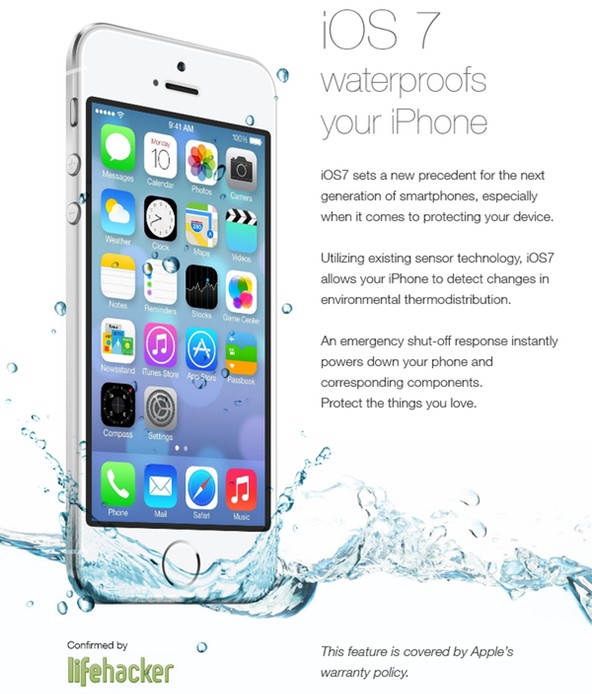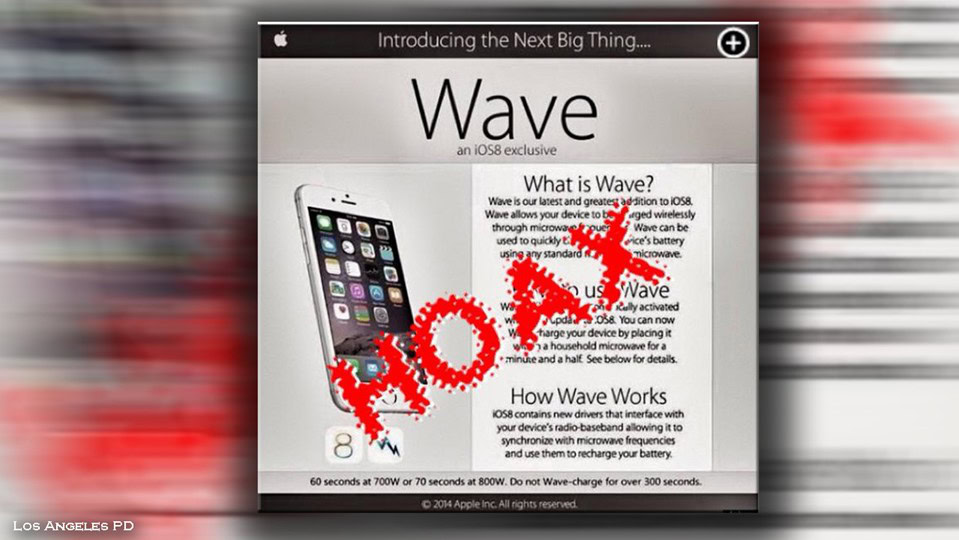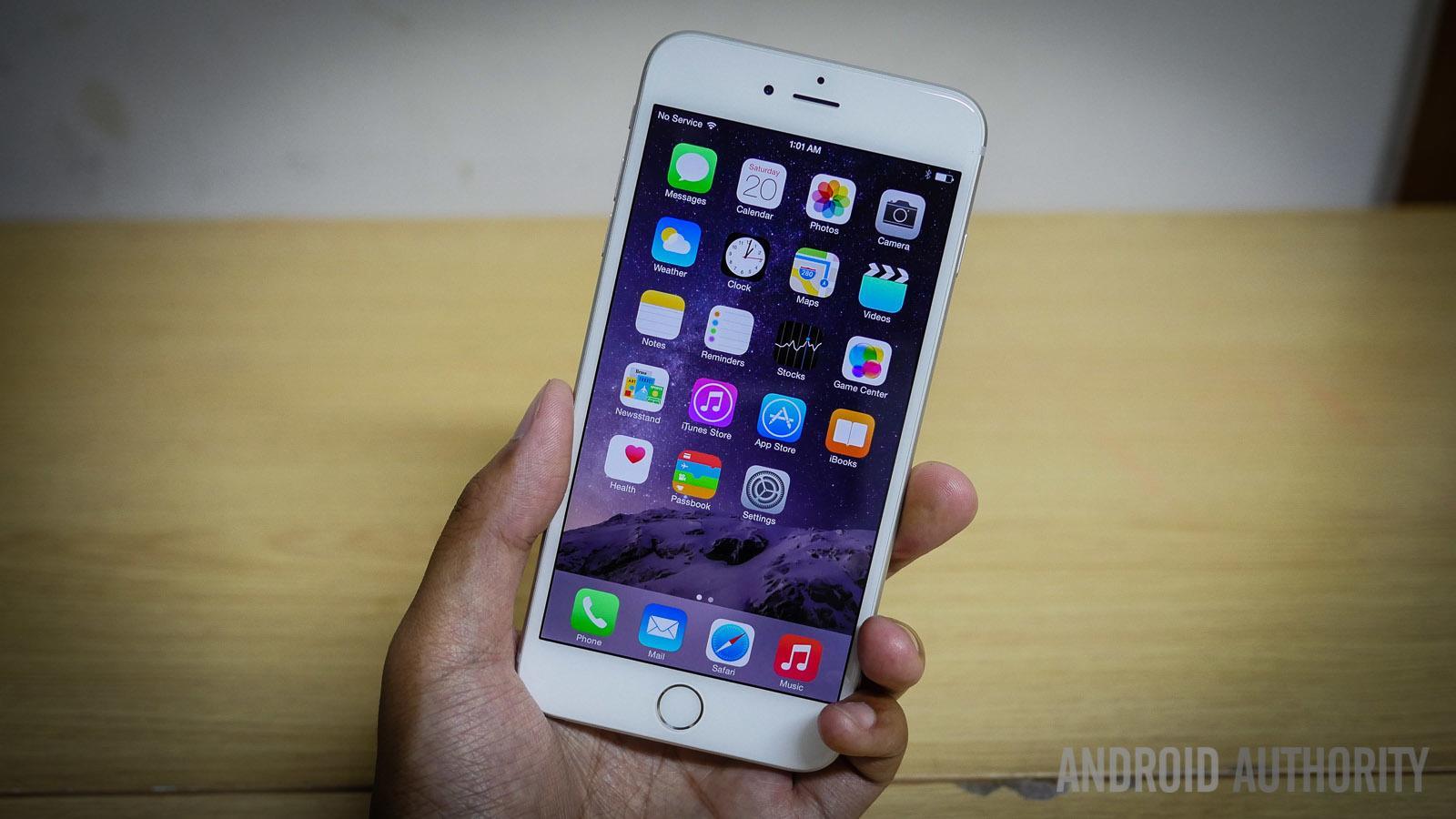Compared to today, the mid-2010s seem like such an innocent and naive time on the internet. People were making Vines and hotly debating the color of a dress, but there was also some mischief on the rise. Somewhere between the peak of 4chan trolling culture and the growing cult of Apple, a bizarre trend emerged: fake iPhone features that convinced people to destroy their own phones.
As odd as it sounds, these hoaxes weren’t as obvious scams as they might seem today. They were sleek, well-designed mockups that looked just like official Apple ads, claiming each new iOS update secretly unlocked incredible hardware abilities. One claimed to make your phone waterproof. Another encouraged you to drill into your shiny new iPhone 7 to access a secret headphone jack.
News outlets and even police departments were forced to step in.
But perhaps the most notorious of them all was Apple Wave, a made-up feature that supposedly let you charge your iPhone by putting it in the microwave.
And while most people rolled their eyes and scrolled on, others actually believed them — enough that news outlets and even police departments were forced to step in. You might be wondering how we got there, so we’ll take you through the most notorious iPhone pranks of that strange internet era.
The pranks that fooled iPhone users
Not all of the pranks hit at once. They arrived in waves, often timed with the launch of a new iPhone or iOS update. While they were covered in reputable news reports at the time, we’ll never know exactly how many users were actually fooled. Still, let’s dive into the most widespread and damaging examples.
The waterproof iPhone (2013)

It all started with iOS 7. Apple had just given the iPhone a major visual overhaul, but online pranksters had something else in mind — a software update that supposedly unlocked magical new physical abilities.
Shortly after the update rolled out, a fake ad began making the rounds online, claiming that iOS 7 made iPhones waterproof. The ad looked convincing enough: clean fonts, realistic Apple branding, and an explanation that sounded just techy enough to be believable. It claimed the phone could detect contact with water and automatically shut off its power to prevent damage.
Plenty of users were skeptical, but some reportedly tried it — and found out the hard way that iOS can’t defy physics. Media outlets, including ABC News and The Guardian, covered the prank, noting that several iPhones were damaged by people testing the claim. The Guardian even pointed out that the ad circulated widely enough to “trick users into destroying their handsets.”
Apple Wave — iPhone microwave charging (2014)

If waterproofing sounded questionable, the next prank went fully off the rails. In 2014, after the release of iOS 8, a new fake feature called Apple Wave began circulating online. According to spoofed ads, the update unlocked a hidden ability in the iPhone’s hardware that allowed users to charge their iPhone by putting it in the microwave.
The fake promotional material claimed that the iPhone’s RF chip — generally used for cell signals — could somehow convert microwave energy into battery power. The ad looked polished and used language similar to Apple’s actual marketing, leading some to believe it might be real.
The ad looked polished and used language similar to Apple’s actual marketing.
Of course, putting your iPhone in the microwave is a guaranteed way to destroy it, and some people found that out firsthand. The prank spread widely enough that the Los Angeles Police Department issued a public warning on Twitter, stating, “This wave capability is a #hoax. Don’t be fooled into microwaving your #iPhone6.”
Unlike the waterproofing myth, which at least sounded vaguely plausible to the tech-inexperienced, this one was a full-blown absurdity. Yet, as posts on the Apple community forum suggest, it reportedly still caught people out.
#Bendgate gets a twist (2014)

When the iPhone 6 and 6 Plus launched in 2014, a few early adopters began noticing something unusual: their phones were bending. It turned out the new, thinner aluminum chassis wasn’t holding up so well in people’s pockets — especially in skinny jeans — and soon, social media was flooded with photos of warped devices.
The controversy, quickly dubbed #Bendgate, made headlines and forced Apple to respond. The company downplayed the issue, claiming it had only received a handful of complaints, but the images told a different story. And then came the prank twist.
4chan trolls began pushing the idea that bending the iPhone wasn’t a flaw — it was a feature called Bend. Some posts claimed the curve improved ergonomics or was part of a hidden design mode activated by enough pressure. A few even encouraged users to keep bending until the screen popped out.
There’s little evidence that a significant number of people fell for this one in the same way they reportedly did with the iPhone waterproofing or microwave hoaxes. However, in the chaotic aftermath of Bendgate, you could never be too sure who was joking and who was just gullible.
Drill for a headphone jack (2016)
When Apple removed the headphone jack from the iPhone 7, it sparked a wave of frustration and a particularly cruel prank. Capitalizing on the backlash, one YouTuber uploaded a video claiming that the phone still had a 3.5mm headphone port hidden beneath the surface. All you had to do was drill it out.
The video above, posted by TechRax, showed someone clamping the iPhone in a vice and drilling into the corner where the headphone jack used to be. It was framed as a DIY lifehack, promising that users could unlock a hidden feature Apple had left behind.
Multiple publications covered the hoax and issued warnings.
Despite the video being clearly satirical to most — especially given TechRax’s history of destroying phones for entertainment — it was reported to have fooled a few people. As the BBC News reported at the time, the comment section of the video included posts from angry viewers who said they’d tried it. Plenty of those comments, in turn, were clearly meant to be in on the joke, such as indicating that you then had to wash it in soapy water after drilling the hole. But with video ‘proof’ for this hoax, it’s believable that some people took it seriously.
Multiple publications covered the hoax and issued warnings. Snopes even published a fact check confirming that no hidden headphone jack existed and that drilling into your phone would, unsurprisingly, ruin it.
Honorable mentions

Not every iPhone mishap needed a prank campaign to cause chaos in the mid-2010s. A couple of strange issues went viral without the help of prank ads, although mischief-makers still made some false claims about them anyway.
In 2016, users discovered that setting an iPhone’s date to January 1, 1970, could permanently brick the device. This bizarre software bug affected 64-bit iOS devices and was likely tied to how UNIX time handles dates. Basically, it made the phone think it was living in a time before time existed. The only fix was a trip to the Apple Store or, in some cases, a full replacement. Apple acknowledged the bug and issued a software update shortly after.
Mischief-makers still made some false claims about them anyway.
While not the viral part of the story, pranksters on 4chan did spread fake ads claiming that setting your iPhone to this date would unlock a retro Apple logo.
Then there was Hairgate, the odd claim in 2014 that the seam between the iPhone 6’s glass and aluminum body could catch and pull out strands of your hair when you made a call. Dozens of users reported it, and the story made the rounds in tech blogs and newspapers, though Apple never acknowledged it as a real issue. It’s unclear how widespread the problem actually was or whether it was more meme than malfunction, but the name stuck.
It was an odd time for these pranks and hoaxes, but they weren’t just about gullibility — they were a bit of a reflection of how much faith people had in Apple’s innovation. If your iPhone could unlock with your face, who’s to say it couldn’t charge in a microwave? Thankfully, most of us are a little more skeptical now.
Did you believe these fake campaigns back in the mid-2010s? Whether you or someone you know did, feel free to hit up our poll and comments section below.
Did you or anyone you know believe a fake Apple advert?
19 votes








